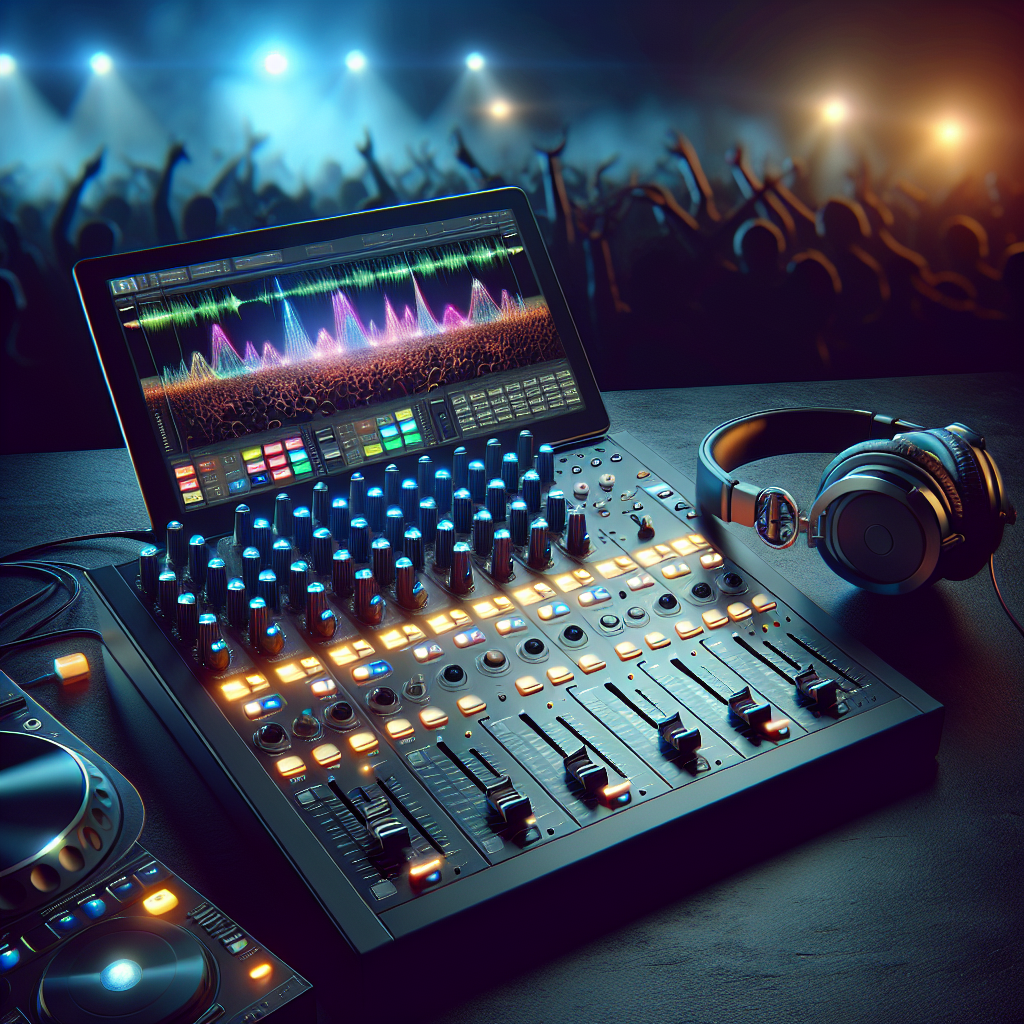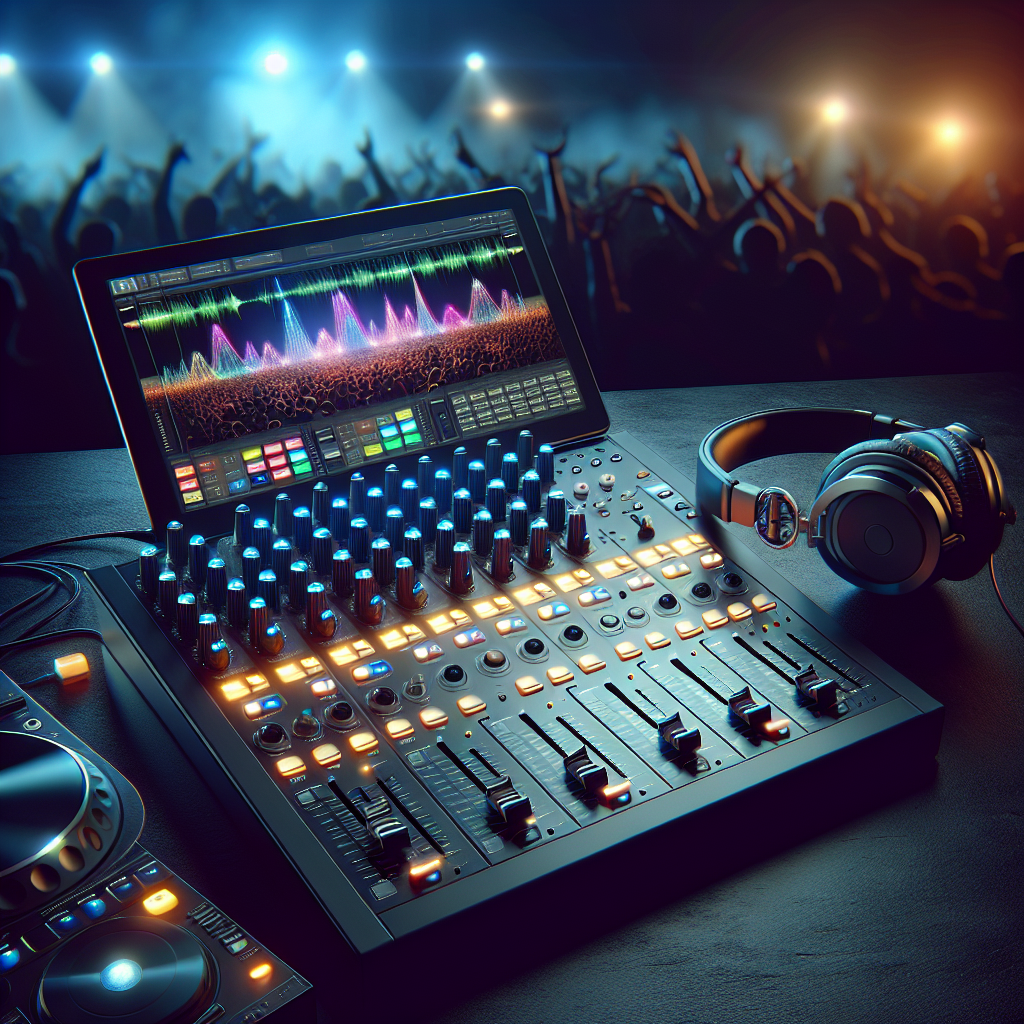
Have you ever wondered how you can mix music like a pro? Mixing music may seem like a daunting task, but with a little know-how, you can create impressive mixes that will have your friends and family dancing to your beats. In this article, we will explore the basics of music mixing, from understanding the role of different audio elements to utilizing essential tools and techniques. So, grab your headphones and get ready to embark on a musical journey as we uncover the secrets of how to mix music like a pro!
How Can I Mix Music
If you’ve ever wondered how to mix music, you’ve come to the right place. Mixing music can be an exciting and creative process that allows you to bring out the best in your recordings. Whether you’re a beginner or an experienced musician, this comprehensive guide will walk you through the basics of music mixing and provide you with tips and techniques to help you achieve a professional-sounding mix.
Understanding the Basics of Music Mixing
Before diving into the technical aspects of mixing, it’s important to understand the basic principles. Mixing is the art of blending individual tracks together to create a balanced and cohesive sound. It involves adjusting levels, panning, equalization (EQ), compression, and adding effects to enhance the sonic qualities of each element in your mix.
When mixing music, your goal is to create a clear and dynamic sound that showcases each instrument or vocal while maintaining a sense of cohesion. This means finding the right balance between different elements, controlling the frequency spectrum with the help of EQ and compression, and using effects tastefully to add depth and space to the mix.
Gathering the Necessary Equipment and Software
To begin mixing music, you’ll need some essential equipment and software. Firstly, you’ll need a computer with digital audio workstation (DAW) software. There are many options available, such as Ableton Live, Logic Pro, or FL Studio, and each has its own unique features and user interface.
In addition to a computer and DAW software, you’ll need a good pair of studio headphones or studio monitors. These will allow you to accurately hear and evaluate the different elements in your mix. Studio headphones are a more affordable option, while studio monitors provide a more accurate representation of the sound.
Investing in a MIDI controller can also greatly enhance your mixing experience. MIDI controllers allow you to control various parameters in your DAW, such as volume, panning, and effects, using physical knobs and faders. This hands-on approach can make the mixing process more intuitive and efficient.
Setting Up Your Mixing Environment
Creating an optimal mixing environment is crucial for accurate and reliable monitoring. Start by finding a quiet space where you can set up your equipment without distractions. Avoid rooms with excessive echo or background noise, as they can affect your perception of the mix.
Consider acoustic treatment for your mixing room to minimize reflections and create a more controlled listening environment. This can be achieved by using bass traps, diffusers, and acoustic panels. Additionally, positioning your speakers correctly in relation to your listening position and minimizing the reflections from nearby surfaces will ensure an accurate representation of the mix.

Preparing Your Tracks
Before you start mixing, it’s essential to properly prepare your tracks. Begin by organizing your session and labeling each track. This will help you stay organized and easily navigate through your project as you mix.
Next, ensure that all the recorded tracks are properly edited. Trim any unnecessary silence, crossfade sections that need smoothing, and make sure all the tracks are properly aligned. This will save you time and make the mixing process more streamlined.
Also, consider cleaning up any unwanted background noise or clicks and pops that may have been picked up during the recording process. You can use noise reduction plugins or manually edit out any imperfections.
Setting Levels and Panning
Once your tracks are prepped, it’s time to set the levels and create a balanced mix. Start by adjusting the volume faders for each track so that they blend well together. Pay attention to the relationship between different elements and aim for a cohesive sound.
Panning is another important aspect of creating a balanced mix. Experiment with panning the different elements to different positions in the stereo field. By positioning instruments and vocals across the stereo spectrum, you can create a sense of space and width in your mix.
Remember to listen to your mix in mono as well, as it can reveal any phase cancellation issues or imbalances that might not be apparent in stereo. Ensuring a balanced and well-panned mix in both mono and stereo will result in a more enjoyable listening experience on various playback systems.
Applying EQ and Compression
Equalization (EQ) and compression are powerful tools that can greatly enhance the sound of your mix. EQ allows you to shape the frequency response of each instrument or vocal, while compression helps to control dynamics and add sustain to a sound.
When using EQ, listen carefully to the individual tracks and identify any frequency areas that need adjustment. Cut unwanted low-end rumble or high-end harshness, and boost or attenuate frequencies to bring out the best in each element. It’s important to be mindful of not over-EQing and to maintain a natural and transparent sound.
Compression is useful for controlling the dynamic range and ensuring a consistent level throughout your mix. Apply gentle compression to smooth out peaks and add a sense of glue to your mix. Experiment with different attack and release settings to find the right balance between control and transparency.
Adding Effects and Processing
Adding effects and processing can take your mix to the next level by adding depth, space, and interest. Effects such as reverb, delay, and modulation can create a sense of ambience and enhance the spatial characteristics of your mix.
Reverb is particularly useful for placing elements in a virtual space. Experiment with different reverb settings and adjust the wet/dry mix to find the right amount of reverb for each track. Similarly, delay can be used to create interesting rhythmic patterns or add a sense of depth to your mix.
In addition to effects, consider using processing techniques like saturation, stereo widening, and transient shaping to add character and excitement to individual tracks. However, use these tools sparingly and with intention, as overusing effects can clutter the mix and detract from the overall clarity.
Arranging Your Mix
When arranging your mix, consider the overall structure and flow of the song. Utilize automation to add movement and variety to different sections, such as fading in or out certain elements, automating effects parameters, or creating dynamic builds and drops.
Experiment with different arrangement ideas to create a compelling journey for the listener. Thoroughly listen to the transitions between sections, making sure they flow smoothly and maintain the energy of the song. Don’t be afraid to make bold creative decisions during this stage, as it can truly elevate your mix.
Ensuring a Balanced and Cohesive Sound
As you near the completion of your mix, it’s important to ensure a balanced and cohesive sound. Take the time to critically listen to your mix on various playback systems, such as headphones, studio monitors, and car speakers. This will help you catch any issues or imbalances that might not be apparent on a single system.
Pay attention to the frequency balance of your mix. Ensure that no particular frequency range is overpowering or lacking in energy. Make subtle adjustments using EQ, compression, or volume to achieve a pleasing overall balance.
Additionally, strive for a cohesive sound by making sure each element serves the song and contributes to the overall musicality. Eliminate any unnecessary elements or conflicting parts, and ensure that each instrument or vocal has its own space in the mix. A well-executed mix will allow each element to shine while working together as a whole.
Finalizing and Exporting Your Mix
Once you are satisfied with your mix, it’s time to finalize and export it. Double-check your mix for any last-minute adjustments, listening for any potential issues or areas that could be improved. Make any necessary tweaks to ensure you’re creating the best possible mix.
When exporting, choose a high-quality audio format such as WAV or AIFF to preserve the integrity of your mix. Set the appropriate sample rate and bit depth, keeping in mind the intended platform or medium for your mix. Finally, listen to the exported mix one last time to ensure it sounds as intended.
Congratulations! You have successfully navigated the process of mixing music. Remember, the more you practice and experiment with different techniques and tools, the better you will become. Mixing is both an art and a science, and with time and dedication, you can develop your own unique mixing style and achieve professional-sounding results. Happy mixing!
